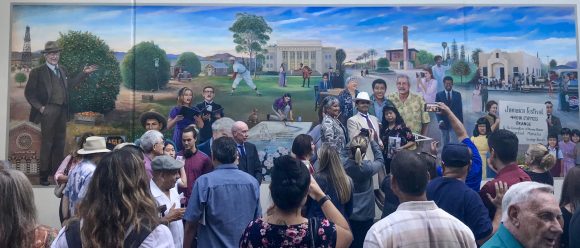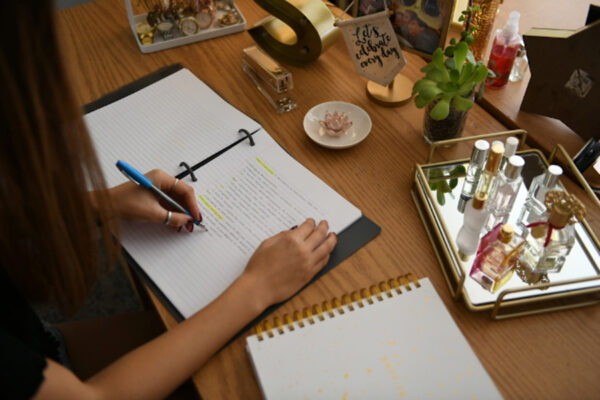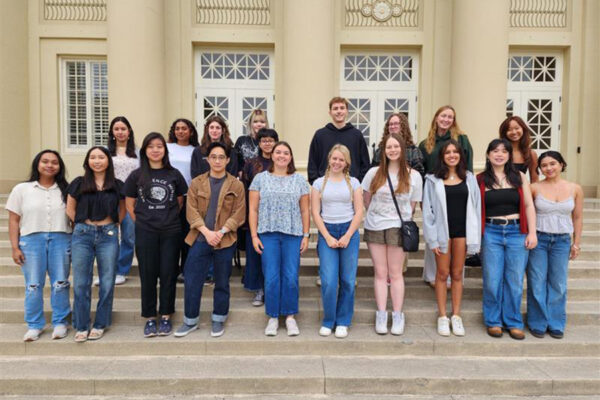From her Chapman University office, Lindsay Shen used to watch as students and faculty strode wordlessly to and from Moulton Hall – lots of hurried people against a backdrop of beige walls. “It was a walk-through space,” she says.“No one had reason to pause.”
And now?
“People don’t just walk through anymore,” says Shen, Ph.D., Chapman’s director of art collections. “They stop and talk to each other. They look.”
Transforming the space is a 27-foot mural painted on the exterior of Waltmar Theatre. It depicts community life through the years, with images ranging from University namesake C.C. Chapman to neighbors gathered at a Jamaica Festival in the historic Cypress Street Barrio.
The idea for the “Visions of Chapman” artwork evolved after Higgy Vasquez was commissioned by Chapman to restore an iconic mural painted by his late father, the famed artist and muralist Emigdio Vasquez, often called “the godfather of Chicano art.” That mural, on the side of a Cypress Street apartment complex, was central to the University’s participation in The Getty Center’s Pacific Standard Time LA/LA regional exhibition.
The new mural, unveiled in September, took about a year to plan and another year to paint. Along the way, it received support from the Ellingson family, as well as research assistance from the Orange Barrio Historical Society and the Orange Public Library.
As the work progressed, passersby grew accustomed to seeing Vasquez perched on scaffolding with a paintbrush in hand, or dousing the surrounding concrete paths with water to add moisture to the air to keep the tempera paint from drying too quickly as the artist fine-tuned the work.

Vasquez divided the mural into three sections.
The first pays homage to the early Chapman history and the region’s citrus era, with the middle section showing students, alumni, campus buildings and visitors, including the Rev. Martin Luther King Jr. and author and Holocaust survivor Elie Wiesel.
In the third section, the life of the Cypress Street Barrio is celebrated. This section includes a small image of the artist himself, grinning from the right-hand corner.
That smile was evident at the unveiling, which was attended by several of the people portrayed. They snapped photos and took a moment to consider Chapman’s place in the history of the wider community.
Those conversations continue.




